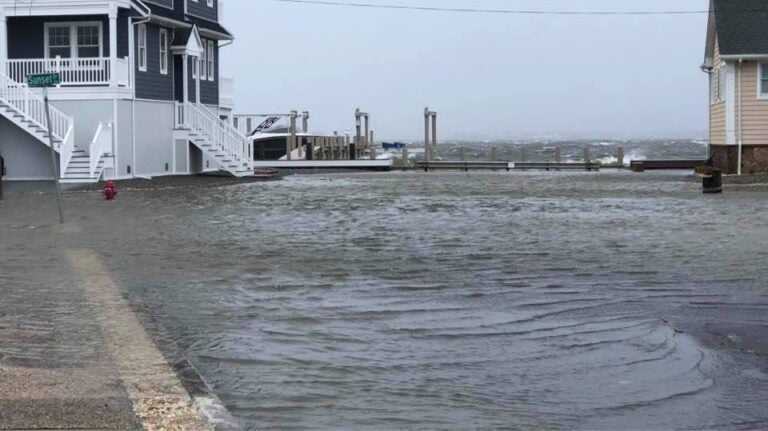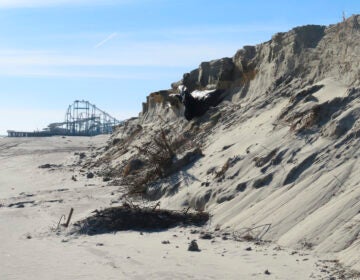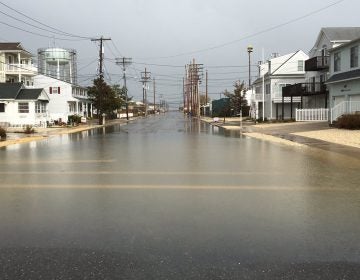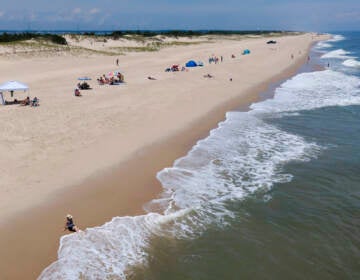N.J. among states at highest risk of future coastal flooding impacts, study finds
New Jersey is third in the United States for most properties at risk of tidal flooding, new data shows.

Tidal flooding in Pelican Island, N.J. on April 13, 2020. (Courtesy of Dominick Solazzo)
New Jersey is third in the United States for most properties at risk of tidal flooding, new data shows.
A study released by the First Street Foundation, a nonprofit organization that studies sea-level rise, found that 11.2% of New Jersey properties, or 385,400, are currently at substantial risk. The average percentage of properties at substantial risk in the United States is 10.3%.
By 2050, the study found that 13.3% of the state’s properties, or 459,000, will be at substantial risk, compared to the national average of 11.4%.
Ocean City leads the state with 17,255 at risk properties, followed by 11,675 in Toms River and 11,495 in Sea Isle City, according to the study, which also found that 98% of properties in Wildwood are at risk, 95% in the Dover Beach South section of Toms River and 93% in Margate City and Lavallette.
The densely populated Raritan River region is also threatened by rainfall and riverine flooding.
“The Jersey Shore is threatened by major recurrent flooding including nuisance flooding with high tides as well as devastating regional flooding from strong storms, like Hurricane Sandy,” the study found. “The US Army Corps of Engineers is constructing a massive series of levees to reduce the threat, but a number of towns remain at risk.”
The First Street Foundation flood risk model was developed by 80 hydrologists, researchers and data scientists, building upon decades of peer-reviewed research, model outputs, and federal government data.
In a statement, Jeff Tittel, director of the New Jersey Sierra Club, said the study is clear that more people are in danger by building in flood-prone areas.
“This very disturbing report shows how New Jersey is not prepared for sea-level rise or climate impacts. It is downright scary that we’re third in the nation, and things are getting worse,” he said.
A report released by the New Jersey Department of Environmental Protection in late June found that by 2050, there is a 50% chance that sea-level rise will meet or exceed 1.4 feet and a 17% chance it will meet or exceed 2.1 feet.
The state began working on a Coastal Resilience Plan in late 2018 to guide policies that reduce environmental impacts and attract sustainable investments.
The plan, which is due to be released by September, seeks to reduce risks from flooding, improve awareness and understanding, create consistent guidance, and make adaption easier.

Get daily updates from WHYY News!
WHYY is your source for fact-based, in-depth journalism and information. As a nonprofit organization, we rely on financial support from readers like you. Please give today.




